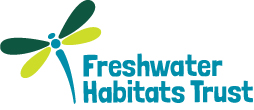
In November 2013, the Freshwater Habitats Trust, in partnership with the European Environmental Bureau, and the backing of the European Commission and the government of Lithuania, brought together water and nature managers from 18 EU states to discuss how better to protect the continent's small waters.
Small water bodies – headwaters, small streams, ponds, flushes and ditches – are vital for freshwater biodiversity but remain largely overlooked by Member States and widely excluded from the provisions of the Water Framework Directive and River Basin Management Plans which describe how we should be protecting freshwaters. The workshop was the first step in producing a manual of best practice guidance, which will be available for the 2nd cycle of River Basin Management Plans in summer 2014.
Small water bodies are a major part of Europe’s freshwater network; they include many of the least damaged freshwaters across the continent, support a large proportion of its freshwater biodiversity, mediate many ecosystem processes, influence the condition of larger water bodies and are often of considerable interest to citizens. Their protection and management is thus relevant both for the improved implementation of the Water Framework Directive (WFD) and for other EU water-related legislation and policies, in particular the Nature Directives and EU Biodiversity Strategy to 2020.
The purpose of the workshop was to:
- provide a forum to discuss possible ways to better protect and manage small water bodies and
- begin the process of developing a manual of best practice advice for the protection and management of small water bodies in EU Member States.
Small water bodies are abundant in Europe but it is only comparatively recently that research has shown how important they are for freshwater biodiversity and ecosystem services. There is now growing awareness of their significance, as shown by the European Environment Agency’s European waters – assessment of status and pressures and the European Commission’s Blueprint to Safeguard Europe’s Water Resources, both published in 2012. However, small waters remain relatively neglected in water and management policy and practice. The workshop therefore aimed to bring together specialists and stakeholders to consider how to better manage small waters without excessive cost.
Opening speeches
The workshop was opened by Dalius Krinickas, Water Director for Lithuania, and Peter Gammeltoft, Head of the Water Unit DG ENV C1 – which manages the implementation of the WFD across Europe. Mr Krinickas noted the wide concern about small water bodies and their importance in Europe. For example, 80% of Europe’s river network consists of small rivers, commonly known as headwaters, creeks, streams or brooks. He also noted the common understanding of their exceptional value from an ecological and economic viewpoint, and their greater vulnerability to human activities compared to larger waters. He concluded that the goal of good environmental status should be applied to small waters, and that the workshop, and the advisory information which would be produced as the eventual output from the workshop, would contribute towards this ambitious goal.
Mr Gammeltoft summarised the substantial progress that had been made in the implementation of the WFD, particularly the impressive improvement in the knowledge of water status, increased transparency in setting objectives and managing water, and the firm integration of the ecological perspective into water management. He noted that there are still areas where additional guidance may be needed (monitoring, chemical status, costs and benefits analysis, hydro-morphology, etc) and that there is still a need for determined effort to ensure achievement of WFD objectives in the 2015 and 2021 cycles. Finally, he commented on the areas where small waters have been identified in the Blueprint and, although the Blueprint does not contain specific measures for small waters, noted that the output from the workshop, and the guidance it produces, should usefully contribute to the working groups on Natural Water Retention Measures, hydromorphology, Pressures and E-flows.
Report provided by Kathryn Walker of Freshwater Habitats Trust, from the workshop on 14th November 2013 in Brussels
